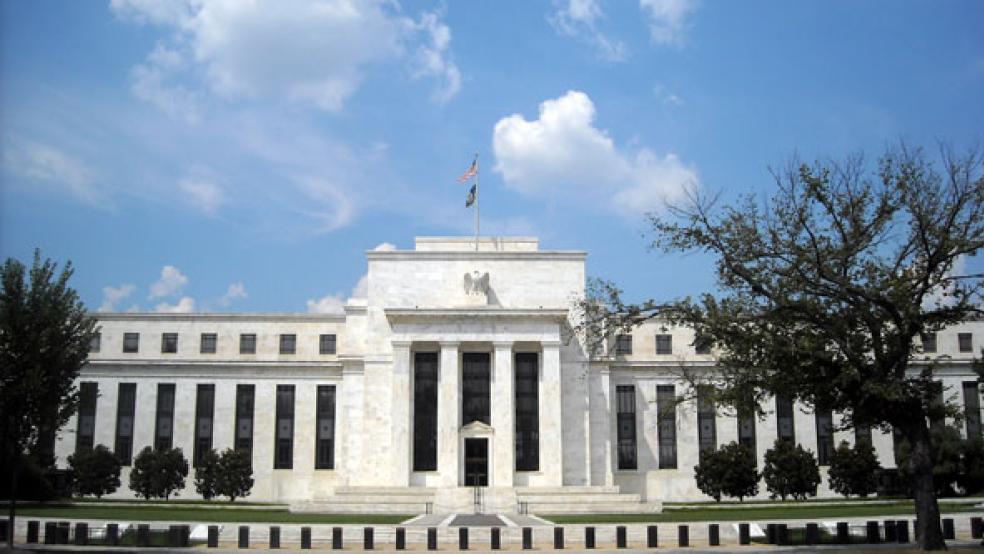The Federal Reserve’s job isn’t to make money, but as a by-product of its massive efforts to stabilize the recession-wracked economy, it’s making a ton of it.
After covering its expenses, the Fed transferred about $34 billion to the Treasury in both fiscal 2008 and 2009, representing earnings from U.S government securities it owns and its investments in troubled banks and financial institutions.
This year the central bank is likely to kick in well over twice that much—$77 billion—and reduce the budget deficit by an equivalent amount, according to the administration’s fiscal 2011 budget proposal.
"It’s the big spread between the Fed’s cost of money and the yield on its assets that has boosted its income to unprecedented levels," said economist Ray Stone of Stone & McCarthy Research Associates.
Many members of Congress have complained the Fed has put huge amounts of tax dollars at risk by loaning money to banks, broker-dealers, companies issuing commercial paper and insurance giant American International Group. The central bank also helped finance JPMorgan Chase’s acquisition of the defunct investment bank, Bear Stearns, to the tune of $29 billion.
The Treasury Department has also reported receiving substantial returns on many of its investments in institutions through its Troubled Asset Relief Program, in some cases getting returns of 20 percent or more.
According to Fed officials, the central bank so far has made money on all of its loans and investments, though there could be some losses on those to AIG in the future.
The Fed is making far more money than usual because, as a part of its support for the economy, it has purchased more than $1.5 trillion worth of Treasury and mortgage-backed securities that are paying a solid return. The goal is not more income but to bring down longer-term interest rates—and by increasing demand for the securities the Fed appears to have made that happen, since bond yields move inversely to price.
Some analysts believe rates on 30-year fixed-rate mortgages, which typically are tied to Treasury yields, may be a full percentage point lower as a result of the Fed’s purchases. And Brian P. Sack, an executive vice president at the New York Federal Reserve Bank, said in a Dec. 2 speech that the additional demand from the Fed for Treasury securities may have lowered current yields on 10-year notes by half a percentage point.
On average, the Fed’s $2.2 trillion worth of assets are yielding around 4 percent, Stone, the economist, said in an interview. About half the assets are the traditional Treasury securities the Fed holds as backing for the nearly $1 trillion worth of U.S. currency in circulation, and that money costs the Fed nothing. The other asset purchases have been financed largely by creating another $1.1 trillion in bank reserves which the banks have left on deposit at the Fed even though the money earns only about a quarter of 1 percent.
Fed officials have said their unusual asset purchases will be completed by the end of this quarter.
The circumstances that have turned the central bank into a cash cow will start to shift when the economy’s prospects improve enough for the Fed to begin withdrawing the extraordinary stimulus it has put in place. Analysts expect that to be a gradual process and start sometime late this year.
In normal times, the Federal Reserve’s key method for influencing the economy is raising or lowering its target for the overnight lending rate. For the past year, however, that target has been set at zero to one-quarter percent, the lowest practicable, and at a Jan. 27 policymaking meeting, Fed officials said it will remain there "for an extended period."
When the Fed begins to raise its target rate, the central bank’s cost of funds will begin to go up and its income will begin to shrink.
The mortgage-backed securities are another matter. At some point, Fed officials might decide the central bank should sell the securities back to private investors, but to avoid any shock to mortgage interest rates, that could be years ahead. The new budget estimated that the Fed payment to the Treasury will be $79 billion in fiscal 2011 and begin to fall after that. The amount will depend in part on how the economy performs and whether the financial system continues to heal. The better the economy does, the faster the figure will fall.


